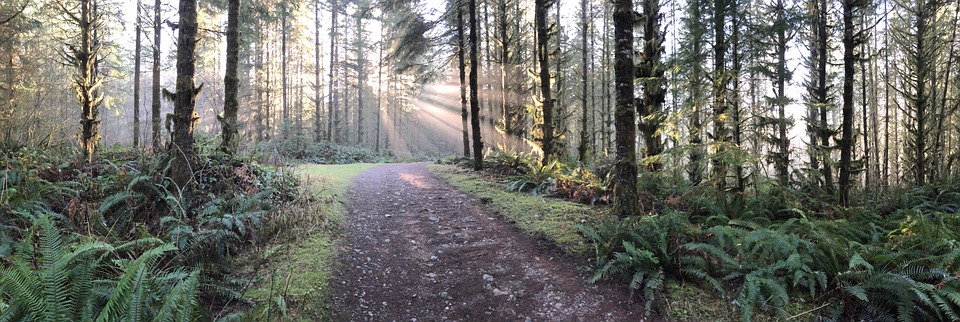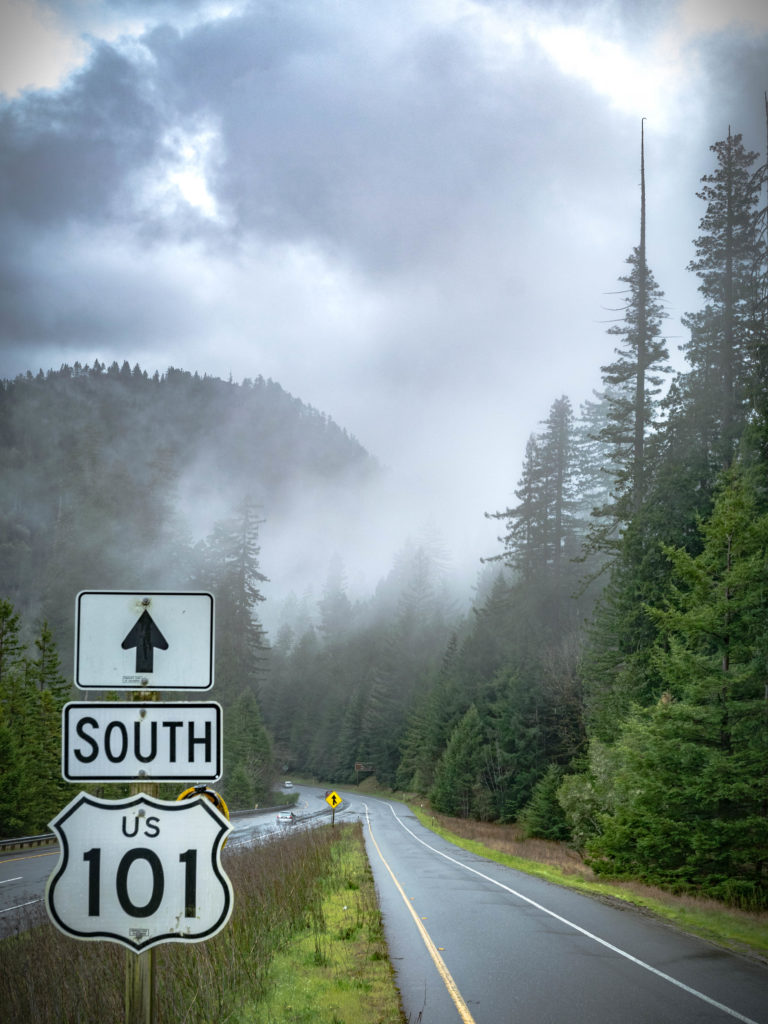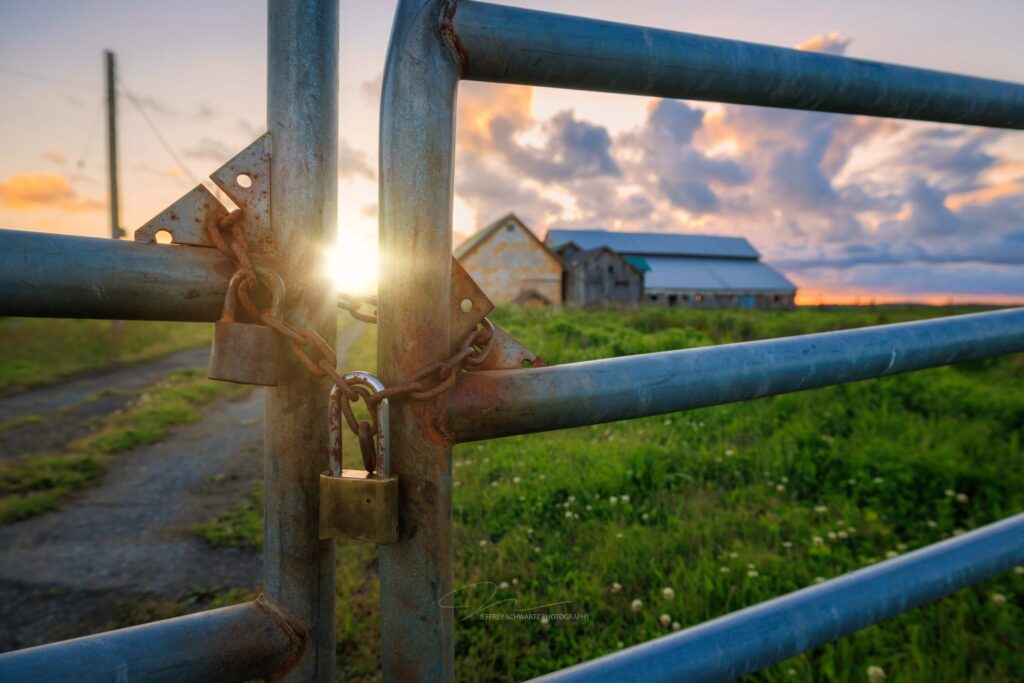TO SUBSCRIBE TO THIS NEWSLETTER, CLICK HERE AND ENTER YOUR EMAIL. YOU’LL GET HUMBOLDT COUNTY REAL ESTATE MARKET REPORTS 4 TIMES A YEAR, SEASONALLY, AND THAT’S IT!

This Market Report is a little different. We will have some basic statistics, without much interpretation at the end, but we are going to use the bulk of this report to address what is happening in our State with Insurance companies, premiums and coverage, especially as it relates to Humboldt County specifically. So prepare yourself for a primer on that coming up here in a moment.

FIRST, LET’S QUICKLY ADDRESS INTEREST RATES
At the writing of the last Market Report in late October, mortgage interest rates were hovering around the 8’s, and right now they’re in the mid 7’s, and in some cases even lower. For some, this drop doesn’t signify anything too dramatic – lots of people are still waiting for rates to drop even more – however a full percent drop in just under 3 months equates to hundreds of dollars in interest that would have been paid monthly, and thus, thousands of dollars in increased purchase power for the average buyer. SO, it’s a great sign. Will rates continue to drop? That’s what folks are hoping for, but there’s no way to know for sure.

When rates are high – consider this historical precedent – gleaned from the internet…
“In 1971 the interest rate for a mortgage was 7.33%. If you waited for interest rates to go down, you wouldn’t have purchased a home until 1993. You would have rented for 22 years waiting for rates to go down, meanwhile the value of real estate quadrupled.”
This little quote illustrates for me something that I feel I’m consistently offering to people when they’re considering making a purchase – that there are MANY factors that determine wether or not a home purchase (ultimately, a FINANCIAL INVESTMENT) will be right for you, and wether or not it will pan out financially. Historically, buying and holding real estate has a great track record, and if you can “hold” it long enough, you can weather a lot of economic upheaval – but the whole truth is that we just don’t know.

So, while rates have dropped slightly and may continue to do so, it’s just as possible that they will jump up again, so waiting to buy isn’t necessarily ideal.
In some California markets, a backlog of buyers decided to wait until rates stopped climbing, and then all of a sudden everyone decided to jump into the market at the same time, which caused prices to rise dramatically. People who went ahead and bought at the higher rate, ended up saving 10’s of thousands of dollars in the long run, even though they were paying more interest.
I’ve covered this topic in great detail in other reports, and would be happy to go over it again in person with anyone willing to give us a call… I just don’t want to belabor the point here again. It does come down to this – if you can afford to buy instead of rent, it’s nearly ALWAYS a sound financial decision.

A MUCH BIGGER CURRENT ISSUE: INSURANCE
What follows is a simplified explanation of where we are at amidst an ongoing situation that is unlikely to shift quickly or dramatically anytime soon.
It still surprising to me how many people have yet to be alerted to what is happening with our insurance market in California – especially as it relates to Homeowner’s policies. The actual issue moves far past just homeowner’s insurance, and is more accurately a nation-wide issue, but we are seeing some very specific aspects of this that are currently impacting the state-wide and local market, as well as CURRENT home and property owners -especially in rural counties.

The short version of what is happening is that years of wild fires, coupled with California’s regulations and likely several other political factors have made a few major insurance companies pull out of our state, no longer offering homeowner’s policies. State Farm and Farmer’s to name a couple – although there are more. They are not necessarily cancelling existing policies, although I have heard of people losing their policy for failing to make a payment on time, or in one case being dropped from coverage because their policy was so “new” that the fine print allowed the company to unilaterally cancel them. So, the situation IS affecting current home owners as well as people who are actively buying and selling real estate. This issue is especially compounded in our rural area. Insurance companies are interested in the rising costs they’ve faced from wildfire claims, and when they look at an area like Humboldt, all they see is the trees, and the deduction is made that this area could easily ignite, thus the higher pricing.

There’s a lot that could be said about this, from the issues around climate change models, to the politics of rising insurance rates/premiums and more. However, for the scope of this market report, I’d like to just break down how the issue pertains to our local area and the economics of real estate.
And real quick as a precursor to that, one other educational topic around insurance for those that are not aware….

THE CALIFORNIA FAIR PLAN
Since “fire season” became a thing in California, we have been seeing more and more properties utilize a program called ‘The California Fair Plan,’ which, when instituted in 1968 was intended to offer Californians who were unable to obtain market insurance, a government-backed option of last resort to get their properties covered.
In recent years, the CA fair plan has become utilized by many Californians as they grapple with the changing market. At first, we were seeing it happen because open market insurance company quotes for coverage were astronomical. So, it wasn’t that people were unable to obtain insurance, but that the insurance they were being offered was deeply unaffordable.
At that time, the CA fair plan was still offering reasonable rates and many people took the opportunity to utilize that system. Fast forward to today, and a few short years later, it is becoming many property owner’s ONLY option for coverage. To make matters worse, the CA fair plan rates have also risen dramatically, so much so, that property owners are left with no other option, but to take the expensive, government-backed insurance if they want coverage at all.
There’s tons more that could be said about this, but the reason I included this here is so that people could get a basic understanding of what the CA fair plan is, and also just to cultivate awareness around it’s existence and the role it’s playing in this insurance crisis.
One other note – the CA Fair Plan only covers a home’s FIRE insurance. Property owners still need to seek out additional policies for generic homeowner’s insurance – which just compounds costs.

RURAL PROPERTIES TAKE THE BIGGEST HIT
In Humboldt County, nearly every property is technically considered rural based on the population requirements for the classification. Unless you live in Eureka city limits, you’re in rural property – although my understanding is that the parameters were recently updated and expanded so that even much of Eureka now qualifies as rural by the USDA standards.
However, in this case, when I say “rural” I am not referring to properties “in town,” but rather properties with acreage, lots of trees, or on the outskirts of town. These properties, which make up a huge part of HumCo are seeing the most difficulty obtaining market insurance, and rates for either market insurance OR the CA Fair Plan are so astronomically high, relatively speaking, that most of these properties are not covered at all – and unfortunately, they are also the most fire-prone properties. It is relevant to note that many of these properties are typically purchased as cash sales, since often they do not have public utilities and are generally not ‘financeable’…

This is pertinent to note because in reality, a property owner does not have to have insurance coverage if they don’t want it – unless they are financed by an institution that requires it. SO, these properties are still being bought and sold, and will continue to do so, but often have to forego insurance coverage, making them a much riskier investment. This has contributed to the drop in market value of these properties as well.
We used to see this being an issue of concern for areas that we would consider to be more “in the sticks” like Southern Humboldt, Willow Creek and the like – however lately we are seeing the same issue arise for semi-coastal and coastal areas such as Fieldbrook, Fortuna and even parts of Trinidad and McKinleyville. Those of us living in the cooler coastal climates know intuitively that the fire risk for a property in Fieldbrook is just not the same as it would be Myer’s Flat, but the modeling programs used by the insurance companies are not in on that kind of nuance. So, we’re seeing this issue affect all parts of Humboldt now. Perhaps the ‘safest’ place to be for easily obtaining insurance is in a city, town or suburban area.

ASSESSING RISK
It should also be noted here that each Insurance company has their own climate modeling resource that they use, most of which are considered “proprietary” and are not shared with the general public. So if your insurance company deems your property to be in a high-risk area warranting an extremely high premium, then you don’t even have the ability to reasonably ask and understand “why?”
Furthermore, the way the average person could assess their wildfire risk would be by using the state-run Cal Fire Institution which is systematically addressing the fire safety of each property through new inspection rules and guidelines both at point-of-sale as well as by going door to door to offer inspections for property owners. These Cal Fire inspections give homeowners within the Cal Fire jurisdiction specific actions to take to reduce their fire risk and those actions are considered requirements.
Cal Fire has maps online (see links below) available to the public where you can enter your APN or address and see what they classify your fire risk to be. New maps have just come out, and replaced maps that were “ancient”… from 2007. The newer maps have actually downgraded the fire risk for MANY parts of coastal Humboldt County, which is fantastic news – but still hasn’t changed the situation with Insurance companies.
I had a reasonable question about why an insurance company wouldn’t want to use the Cal Fire maps since Cal Fire is the organization most interested in accurately knowing and predicting fire danger… ??The answer is that besides the fact that the Insurance companies prefer to use a proprietary (secret) modeling tool that they’ve likely already paid millions of dollars for, Cal Fire doesn’t want the liability of having insurance companies model off of their maps. We are a litigious state, after all… and I can understand that.
So, it’s good to know that you can look up your ACTUAL fire risk online, but know that this will not matter one iota to the Insurance companies you’re dealing with.

WHAT IS THE TRICKLE-DOWN OF ALL OF THIS?
Well, here’s what’s happening day-to-day…
Historically, buyers would wait until the end of their transaction to seek out insurance for a property/home they are purchasing. Because people are slow to learn of this situation, there are stories of buyers who’ve reached the finish line on a purchase, only to find out that they have to prolong escrow to shop around for insurance – sometimes for weeks. Additionally, there are stories of buyers finding out at the last minute that the only insurance that they can get will be so expensive that they no longer can afford to buy the property, because it inflates their monthly payment so much – and in the end they have to renegotiate or cancel their contracts – their purchase power is diminished for certain properties.

FOR BUYERS
Currently, when I am working with a buyer, especially of a rural property, investigating the insurability/cost of insurance for that property is something that we might do early on in the transaction, for everyone’s benefit.
In cases of very rural properties, we might even look at that before writing an offer to see if that is a deal breaker from the outset. Potentially, a buyer might adjust their offer amount based on what their insurance payment would be. Some buyers (Cash purchases) are having to make the tough decision to go without insurance altogether.
When looking at properties, ask your Realtor to help you access information which you can use to assess the fire-safety of that property through the lens of an insurance company. Use the Cal Fire resources to see if the property itself would trigger an insurance company to want to deny coverage. Doing this can give you an idea of what you’re working with, but do still go on to get quotes for what insurance would cost.
Be aware, that when you are collecting quotes, even if you do have to use the CA Fair Plan, different companies will quote different prices for this SAME PLAN. If you are having to use the CA Fair Plan, you should still shop around.
Understand that fire safety will be an ongoing resale concern. Properties who have a hard time obtaining affordable insurance, or insurance at all, will not sell as easily as those that do not have this issue. If you are using your property as an investment, or are considering reselling soon, you may want to factor this into your decision.

FOR SELLERS
Even if your property is currently insured at a reasonable rate – do not assume it is still insurable at all to a new buyer. Some properties in Cutten, for example, which have historically had no issues, are now facing serious problems finding coverage.
If you’re going to list your property for sale, it could be a benefit to you to get insurance quotes up front from a variety of companies to offer as a selling feature of your property – especially as buyers become more aware and savvy to the issue.
You may want to consult the Cal Fire Website to see what, specifically you can do to help fire-safe your property. There are now point of sale requirements for having a Cal Fire inspection if you are in certain areas. The Insurance industry is looking at and moving towards offering discounts to people who conform to certain fire-safety protocols and who exist in “fire-safe communities.”
Realize that this issue may affect your market value and do your best to get ahead of the curve on determining how it will affect your property in particular.

FOR EVERYONE
Know that this is not an issue likely to be resolved anytime soon. In a world where climate change may be the new norm, and “fire season” is an actual phenomena, this is something that we will have to contend with for the foreseeable future.
Properties that are in cities will have less fire risk, and those that are more rural, country living, will be at risk for being charged more, over-time because of their perceived risk – even if a Cal Fire map doesn’t agree.
If you have good insurance coverage right now, DO NOT lapse in your payments – as people ARE getting cancelled on.
Read the fine print in your existing policy as well as if you are signing up for a new policy, and consider that insurance companies most likely can reassess your rates after a normal claim, so you may want to fully understand the effect of making a policy claim before doing it.
You can be proactive if this issue has directly affected you. The State Insurance Commissioner is an elected official and has stated that the only way to actually make your voice heard is to file a complaint with their office. If you are having a hard time finding open-market insurance or if you have lost your coverage, please reach out and file a complaint on this link:
https://www.insurance.ca.gov/01-consumers/101-help/index.cfm
The Insurance Commissioner’s website has tons of information, including this page, linked below, which has a wealth of information about homeowner’s insurance:
https://www.insurance.ca.gov/01-consumers/105-type/5-residential/index.cfm
It also offers a homeowner’s insurance finder so that if you ARE shopping around, you may want to use this as a resource to help you with finding affordable coverage:
https://interactive.web.insurance.ca.gov/apex_extprd/f?p=400:50
You can also be proactive by educating yourself via the Cal Fire website to better understand your fire-safety options as far as making your property more insurable or sellable here:
Defensible Space information: https://www.fire.ca.gov/dspace
Homeowner’s Resource Hub: https://www.fire.ca.gov/osfm/resources/home-owners-and-individuals
…And… more information at the California Fire Safe Council’s website – whose mission is to be California’s leader in community wildfire risk reduction and resiliency. They also have the goal of helping to make people’s homes more insurable. The California Fire Safe Council is a non-profit formed as a project of Cal Fire in 1993.

MOVING ON, LOOKING AHEAD
A quick side note – I do anticipate that in the future you will see more community and client education around this issue, possibly from your elected officials, but also from our local Realtor Association. We are grappling with the issues first hand, and since it is something that not only is affecting our active clients, but current homeowners, we feel it’s important to start making the local community aware of what is happening and how to prepare – so stay tuned for information on that or feel free to call if you want a current update one-on-one.
Okay, phew… I hope I didn’t leave you with more questions than answers, but as always, you’re welcomed to call me with questions… On to Market Stats…
For the purposes of brevity, I will not be analyzing these stats or explaining what they mean… so, if you’re new to our newsletter, apologies – I usually do that. You can look back through other market reports or google the description to get more information.

MARKET STATS
ARCATA
Number of homes sold in the last 3 months – 24
Average Days on the Market – 20
Average Days to Closing – 25
Sold Median Sale Price -$602K
EUREKA
Number of homes sold in the last 3 months – 70
Average Days on the Market – 44
Average Days to Closing – 33
Sold Median Sale Price -$414K
FORTUNA
Number of homes sold in the last 3 months – 28
Average Days on the Market – 47
Average Days to Closing – 35
Sold Median Sale Price -$378K
MCKINLEYVILLE
Number of homes sold in the last 3 months- -30
Average Days on the Market – 35
Average Days to Closing – 28
Sold Median Sale Price -$524K
SOUTHERN HUMBOLDT
Number of homes sold in the last 3 months – 28
Average Days on the Market – 192
Average Days to Closing – 55
Sold Median Sale Price -$428K

As always, for more detailed information about your region/area or subject property, we’re only a phone call away. Your questions, comments, thoughts, are always welcomed!



Leave a Reply